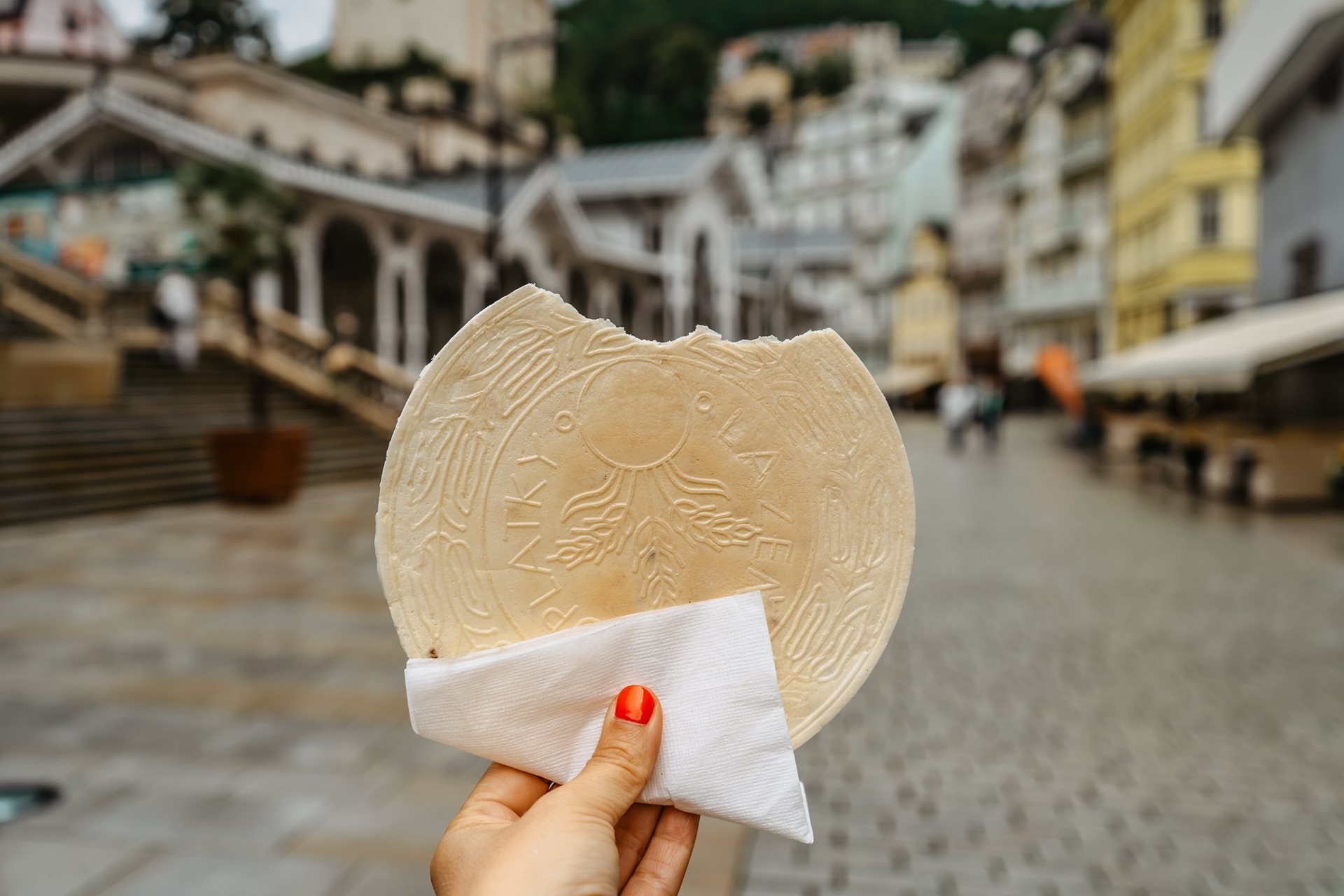Trdelník: Everything You Wanted to Know but Were Afraid to Ask
Chimney cake is a deliciously aromatic delight sold at stalls and so-called ‘hunger windows’ across Czechia. You will most often find it in city centres, tourist zones, and various markets. It resembles a large, hollow cream roll – a crispy cylinder of coiled dough baked on a rotating spit.

Chimney cake is often considered an original Old Czech or Old Slavic sweet pastry, but its recipe actually originates elsewhere. Its roots probably lie in Transylvania (present-day Romania), where it was baked for ceremonial occasions such as weddings or carnival feasts. From there, it spread to Hungary, Slovakia, and later to the Czech Republic. Variations of chimney cake are also baked elsewhere, including in Luxembourg, Sweden, Germany, and Austria.
The Secret of Its Making

In Czechia, chimney cake has become a popular sweet treat, baked by wrapping dough around wooden rollers (trdlo) in the heat over charcoal. During baking, it is rotated and brushed with milk until it takes on a golden hue. The golden dough sprinkled with vanilla sugar or cinnamon sugar is no longer enough on its own. Nowadays, you can buy it filled with ice cream, chocolate, nuts, biscuits, or even gummy bears – often at a price close to that of a full meal from a lunch menu.
Chimney cake has become such a social media phenomenon that you can now enjoy it in different colours – red, pink, brown, or even black. There are even savoury versions with cheese, pulled pork, or bacon – but we wouldn’t stake our reputation on those…
In Czechia, You Can Eat Your Own ‘Coffin’
You already know chimney cake. But we have other tips that will reliably satisfy your sweet tooth when visiting Czechia. And you can be sure these are 100% Czech treats. First up are poppy seed buchty, or alternatively, ones filled with cream cheese or plum jam. You can find them in almost every bakery. Just as you can buy vánočka, a traditional sweet braided bread, on nearly every street corner – most commonly eaten during Advent and Christmas. Its Easter counterpart is mazanec.

Many restaurants and cafés serve fruit dumplings filled with seasonal fruit, topped with melted butter and sugar, and sometimes sprinkled with quark, poppy seeds, toasted breadcrumbs, or grated gingerbread. A regional speciality, particularly in mountain areas (Šumava Mountains, Krkonoše Mountains, Jeseníky Mountains, and beyond), are yeast dumplings stuffed with blueberries picked in the local forests. In Wallachia, they also make potato dumplings filled with plums or large round cakes known as frgály – an extraordinary delicacy you won’t easily find elsewhere. Also excellent are potato pancakes with plum jam and poppy seeds, the light and crispy Štramberk ears, and the delicious Hořice rolls (easily found in shops).

If you visit spa towns such as Karlovy Vary, Mariánské Lázně, Jáchymov, or Luhačovice, be sure to try spa wafers. These can be bought in regular supermarkets and make a great gift for your loved ones and friends.
Once you End up in a Patisserie…

Some patisseries and cafés still serve a traditional Czech dessert known as rakvičky (little coffins). Yes, you read that correctly! This delicate, crisp pastry comes in the shape of elongated bars and is served with a generous helping of white or Parisian-style whipped cream. Dip the rakvičky into the cream – well, there’s no need to say more, it’s simply divine! Another classic in Czech pastry shops includes punčové řezy (rum-soaked sponge slices), indiánky or little Indians (another fantastic name), or Prague cake, a round, soft yeast dough cake filled with a smooth, creamy filling.
So, let us offer you a friendly piece of advice. As you stroll through Prague’s historic centre or explore a market in any other Czech town, keep this in mind: chimney cake is not the best thing Czech cuisine has to offer. We Czechs have a deep love for sweets and know how to create desserts so delicious that you’ll be reminiscing about them long after you return home.
And one last note – if you’re served sweet dumplings as a main course at lunch, don’t be surprised. That, too, is part of our Czech DNA.
